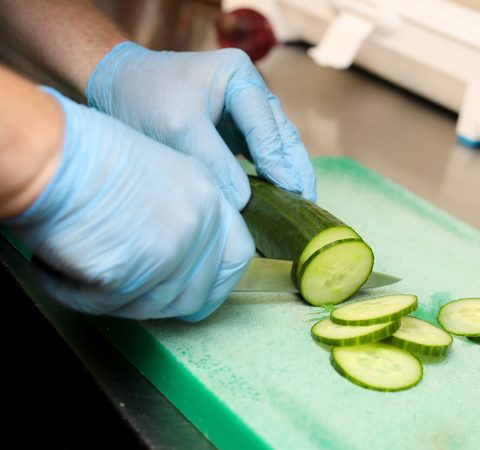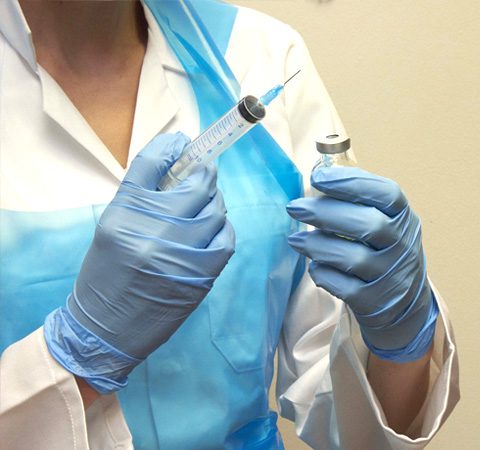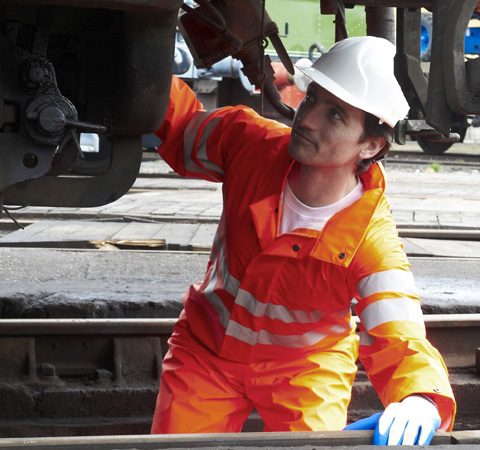All comments are attributable to Sangeeta Aeri, Technical Manager at Supertouch.
Please explain the relationship between relevant regulations and standards ISO 13997 and EN 388:2016?
ISO 13997 is the newest cut resistance test for gloves. It measures the amount of force required for a new, straight blade to cut through the glove liner material at a constant speed of 2.5mm/s, over a distance of 20mm. The force required to do this provides the protection level (a score from A to F, with F being the highest rating).
EN 388:2016 groups together a range of tests, including ISO 13997, to give an overall mechanical resistance rating. This constitutes abrasion, cut, tear, puncture and impact, and helps to inform wearers of the overall protection that a glove offers. These ratings are then communicated through datasheets and stamping on the glove itself, allowing end-users to quickly identify application-specific PPE.
Are the classifications under the regulations well understood or is there some confusion?
While manufacturers are up to speed with the classifications of protective gloves, it is important that they continue to educate end-users on the importance of specifying in-line with the latest methods of testing. This is something that Supertouch values highly, often going to sites and conducting training.
There is still some confusion over the two cut ratings, and Supertouch recommends that end-users specify gloves according to the new regulation ISO 13997 test method. It is a more accurate form of testing, free from anomalies caused by ever-advancing anti-cut technology that has resulted in the old method of testing cut resistance becoming misleading. For instance, some of the ‘cut 5’ gloves on the market only achieve level C in the new test – which is closer to a medium cut-resistance than the high cut-resistance that end-users believe they are getting.
The reason that letters are used to signify cut-resistance is to help avoid confusion and to offer a period of transition from the old method. In theory, this should aid in providing an informed comparison between gloves – provided end-users are aware of the discrepancies between the forms of testing. The code created by the numerical values given for the tests in EN388:2016 enables users to compare and contrast gloves from different manufacturers, equipping them with the knowledge they require to make the optimum purchasing decision.
How can employers in the food industries choose the right type of glove? Is it pretty straightforward provided they understand the classifications or is there sometimes a tricky trade-off? Are there compromises to be made, (perhaps in terms of dexterity, as mentioned in your Pawa glove release, for example)?
There is no one-size-fits-all approach to glove specification, and the best approach is to invite manufacturers/suppliers, such as Supertouch, to site. From here, an audit of the safety needs of staff can be undertaken, alongside the health and safety officer, to ensure the best solution is implemented. This isn’t something that has to be done in isolation by operations and safety managers. Engaging with PPE distributors and their suppliers is the best way to explore all the options available.
Although higher cut-resistance often comes at the expense of dexterity, the latest technology is capable of reducing the extent of this compromise. Brands such as Pawā are undertaking rigorous R&D to ensure that gloves can be safe and practical.
I’m guessing that tough protective gloves are reusable and focused first on the safety of the worker rather than on hygiene. How does that work with the hygiene requirements of food applications? Are they typically hot washed each shift or something? Similarly, a lot of disposable gloves are used for hygiene in food applications. Do any of those provide worker protection or are they solely focused on protecting products? In other words, how can worker safety and product safety be reconciled?
Balancing protection for the wearer with protection for the product is something that every food application must reconcile – though it must necessarily be skewed in favour of employee safety. The best way to achieve this is to ensure robust food handling, hygiene and washing practices are adhered to, and as with any scenario that requires PPE, engaging with both manufacturers and distributors is of paramount importance.
My understanding is that PPE is usually viewed as a last line of defence, with broader health and safety systems ideally mitigating the need for such measures. What are the kind of design measures that should be taken to ensure hand safety before relying on gloves?
Safety system design is not something a PPE manufacturer is qualified to comment on. However, Supertouch is able to work with food manufacturers to help develop bespoke products that can satisfy their needs and provide that vital line of defence. The key thing to remember is that most gloves are not cut proof – they offer differing scales of cut resistance. Where a risk can be designed out of a process, that is always the preferable option.
For more information on the Pawa range of cut-resistant gloves, please visit: https://www.pawaworkwear.com/category/gloves/feature/cut-resistant/
Hand Protection In Food Manufacturing




